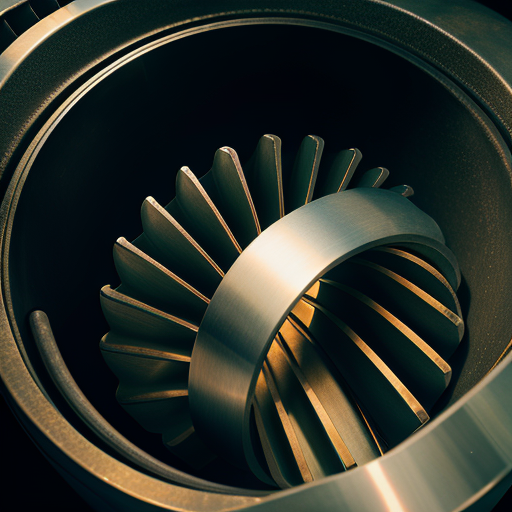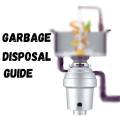The garbage disposal – a silent (well, mostly silent) hero in the kitchen. It devours food scraps, keeping your trash can smelling fresh and reducing waste sent to landfills. But like any hardworking appliance, garbage disposals can encounter challenges. Unusual noises, frustrating clogs, and troubling leaks might signal it’s time to delve into the world of garbage disposal parts.
This comprehensive guide will equip you with the knowledge to troubleshoot like a pro. We’ll explore the essential components that keep your disposal running smoothly, along with signs that indicate they might need some TLC.
The Power of Garbage Disposals:
Garbage disposals offer a multitude of benefits:
- Reduced Waste: Minimize food scraps in your trash can, leading to less frequent trash disposal and a more pleasant kitchen environment.
- Enhanced Convenience: Simply scrape leftover food scraps down the drain and activate the disposal – a breeze compared to overflowing garbage bins.
- Potential for Environmental Benefits: By diverting food waste from landfills (which can generate methane gas), garbage disposals can contribute to a slightly reduced environmental footprint (although composting is generally considered a more eco-friendly alternative).
Signs Your Disposal Needs Attention:
However, even the most valiant garbage disposal can show signs of wear and tear. Here are some red flags to watch out for:
- Unusual Noises: Grinding sounds that are louder or more erratic than usual might indicate dull blades, worn components, or even foreign objects lodged within the disposal.
- Clogged Drain: Frequent clogs or slow drainage can be caused by a build-up of food scraps, grease, or improper disposal habits.
- Leaking Unit: A leaky garbage disposal is a serious issue that can damage your cabinets and flooring. It’s crucial to address leaks promptly.
If you’re experiencing any of these issues, don’t despair! The next section will unveil the essential garbage disposal parts and when they might need replacing.
Essential Garbage Disposal Parts: Unveiling the Inner Workings
Just like a well-oiled machine, your garbage disposal relies on a team of essential parts to efficiently grind up food scraps. Let’s delve into these key components and understand their roles:
- Grind Ring (Shredder Ring): This ring, also known as a shredder ring or stator, is located within the disposal chamber. It features a series of sharp ridges or teeth that pulverize food waste as it’s forced against them by the impeller plate. Over time, the grind ring can become dull due to wear and tear, reducing its effectiveness.
- Impeller Plate (Spinning Blades): Imagine a miniature propeller. That’s essentially the impeller plate! This component features rotating blades that churn and force food scraps down towards the grind ring, facilitating the shredding process. A dull impeller plate can also contribute to grinding inefficiencies.
- Drain Outlet: This is the business end of the disposal, connecting it to your home’s waste disposal system. The drain outlet ensures that the ground-up food scraps are efficiently channeled away.
- Splash Guard (Flange): Located around the top of the disposal unit, the splash guard acts as a barrier. During operation, it prevents food scraps and water from splashing up into your sink. Splash guards can become clogged with debris or worn over time, requiring replacement in some cases.
- Air Switch (Optional): While not an essential part, air switches offer a convenient way to activate your disposal with a simple press of a button on your countertop. They eliminate the need to reach for a potentially germy wall switch, especially beneficial for people with limited mobility.
- Power Cord: This vital component connects the garbage disposal to your electrical supply, providing the power needed for operation. A faulty power cord can render your disposal unusable and should be replaced by a qualified electrician.
- Reset Button: Most garbage disposals come equipped with a reset button located on the underside of the unit. This button can be used to troubleshoot minor jams by manually restarting the disposal’s motor.
By understanding the roles of these essential parts, you can gain valuable insight into potential issues with your garbage disposal. In the next section, we’ll explore when these parts might need replacing to keep your disposal functioning optimally.

When to Replace Garbage Disposal Parts: Keeping Your Disposal in Top Shape
Even the sturdiest garbage disposal parts experience wear and tear over time, and improper use can accelerate the need for replacements. Here’s when you might need to consider replacing some key components:
Normal Wear and Tear:
- Grind Ring and Impeller Plate: These components are at the forefront of the grinding action. Over time, the ridges on the grind ring and the blades of the impeller plate can become dull, leading to reduced grinding efficiency. If you notice larger food scraps passing through undigested or your disposal is straining to function, dull grind rings and impeller plates could be the culprits.
- Splash Guard: While less common, splash guards can deteriorate or become clogged with debris over time. A damaged or clogged splash guard might not effectively prevent splashing during operation, necessitating replacement.
Damage from Improper Use:
- All Parts: Garbage disposals are not invincible! Putting hard objects like bones, fruit pits, or excessive grease down the drain can damage any of the disposal’s parts, including the grind ring, impeller plate, and even the motor. If you suspect you’ve introduced something harmful into your disposal, it’s crucial to address the issue promptly to minimize potential damage.
Warning Signs:
Here are some additional signs that might indicate the need for garbage disposal part replacement:
- Unusual Noises: As mentioned earlier, grinding sounds that are significantly louder or more erratic than usual can signal worn components.
- Persistent Clogs: Frequent clogs that don’t respond to simple troubleshooting methods might be caused by damaged parts within the disposal unit.
- Leaks: A leaking garbage disposal is a serious issue and should be addressed promptly. Leaks can damage cabinets and flooring, and in some cases, might indicate a damaged housing or internal components.
In the next section, we’ll explore where to find replacement parts and ensure you get the right ones for your specific garbage disposal unit.
Finding Replacement Parts: The Perfect Match for Your Grinding Hero
A crucial step in maintaining your garbage disposal is finding the correct replacement parts. Here’s how to ensure you get the perfect match for your specific disposal unit:
Matching Parts to Your Disposal Model:
- Know Your Model Number: The first step is to identify your garbage disposal’s model number. This information is usually printed on a label affixed to the underside of the unit. The model number will be crucial for finding compatible replacement parts.
- Consult the User Manual: Your disposal’s user manual might contain a parts list or diagram that can help you identify the specific parts you need. Additionally, the manual might offer guidance on where to acquire replacement parts.
- Manufacturer’s Website: Most garbage disposal manufacturers have websites that offer resources for parts identification and purchasing. Visit the website of your disposal’s brand (like InSinkErator or Waste King) and navigate to their parts section. Using your model number, you can usually find a list of compatible replacement parts.
Online Retailers and Hardware Stores:
Once you’ve identified the specific parts you need, you have several options for purchasing them:
- Online Retailers: Major online retailers offer a wide selection of garbage disposal parts. Ensure the retailer provides clear compatibility information with your disposal model before making a purchase.
- Hardware Stores: Many hardware stores stock a variety of garbage disposal parts. Take your model number with you to the store to ensure you get the correct parts from a qualified salesperson.
Additional Tips:
- Consider Upgraded Parts: While replacing parts with their original counterparts is always an option, some manufacturers offer upgraded versions of certain components. For example, you might find impeller plates with a more robust design for improved grinding performance.
- Aftermarket Parts: While genuine manufacturer parts are generally recommended, some reputable companies offer aftermarket parts that are compatible with various disposal models. Carefully research the quality and compatibility of aftermarket parts before purchasing.
By following these tips, you can ensure you find the perfect replacement parts to keep your garbage disposal functioning smoothly for years to come. In the next section, we’ll explore some DIY maintenance techniques to maximize the lifespan of your disposal and minimize the need for part replacements.
DIY Garbage Disposal Maintenance: Keeping Your Disposal Happy and Healthy
Just like any appliance, a little preventive maintenance can go a long way in keeping your garbage disposal running smoothly and minimizing the need for part replacements. Here are some simple DIY techniques you can incorporate into your routine:
Sharpening and Cleaning with Ice Cubes and Citrus Peels:
- The Ice Cube Trick: Believe it or not, grinding ice cubes can actually help sharpen the blades of your garbage disposal. Toss a handful of ice cubes down the drain followed by cold water to create a brief but effective sharpening action.
- The Citrus Peel Power: Citrus peels not only add a refreshing scent to your kitchen but can also help deodorize your disposal. Grind up lemon or orange peels (minus the seeds) to freshen things up and potentially loosen any light grease buildup.
Avoiding Common Disposal Enemies:
- Fibrous Vegetables: Celery, corn cobs, and artichoke stalks can tangle and clog your disposal. It’s best to compost these fibrous vegetables instead of sending them down the drain.
- Grease and Oil: While small amounts of grease are generally okay, excessive grease can solidify and clog the disposal. Wipe greasy pots and pans with paper towels before washing to minimize the amount of grease entering the disposal.
Additional Maintenance Tips:
- Run Cold Water While Grinding: Always run cold water while using your disposal and for a few seconds afterward. This helps flush away food scraps and prevents grease buildup.
- Avoid Harsh Chemicals: Drain cleaners and harsh chemicals can damage your disposal’s internal components. Opt for natural cleaning methods like the ice cube and citrus peel techniques mentioned earlier.

When to Call a Plumber:
While DIY maintenance can address many common disposal issues, there are situations where seeking professional help is crucial:
- Leaking Garbage Disposal: A leak is a serious concern and can indicate a damaged housing, loose connections, or internal component failure. Don’t attempt to fix a leaking disposal yourself. Call a qualified plumber to diagnose and address the issue promptly.
- Complex Repairs or Clogs: If you’re facing a stubborn clog that doesn’t respond to your troubleshooting efforts, or if you suspect a more complex repair is needed (like replacing the motor), it’s best to call a plumber. They have the expertise and tools to handle these situations safely and effectively.
By incorporating these DIY maintenance tips and knowing when to call in a professional, you can ensure your garbage disposal enjoys a long and healthy life, efficiently grinding up food scraps for years to come. In the next section, we’ll address some frequently asked questions (FAQs) to provide you with even more valuable information about garbage disposal parts and maintenance.
People Also Ask: Unveiling the Mysteries of Garbage Disposal Parts
We’ve explored the essential components of garbage disposals, how to identify replacement parts, and DIY maintenance techniques to keep your disposal running smoothly. Now, let’s delve into some frequently asked questions (FAQs) to provide even more valuable insights:
Where is the reset button on a garbage disposal?
The reset button on a garbage disposal is typically located on the underside of the unit. It’s usually a small, red button that you can push with a flat-head screwdriver or a similar tool. Consult your user manual for the exact location and instructions for using the reset button on your specific disposal model.
Can I replace garbage disposal parts myself?
Replacing some garbage disposal parts, like the splash guard or reset button, can be a DIY project for those comfortable with basic plumbing tasks. However, replacing more complex components like the grind ring or impeller plate might require some disassembly and electrical knowledge. If you’re unsure about your abilities, it’s always best to err on the side of caution and call a qualified plumber.
How much does it cost to replace a garbage disposal?
The cost of replacing a garbage disposal can vary depending on the brand, model, and complexity of the job. Generally, garbage disposals themselves range from around $100 to $500, with installation costs adding another $100 to $200 on average.
What are the best garbage disposal parts brands?
Some of the leading garbage disposal part brands include:
- InSinkErator
- Waste King
- Moen
- Garbage disposal parts are also manufactured by many generic brands. When choosing replacement parts, prioritize quality and ensure compatibility with your specific disposal model.
By understanding the answers to these common questions, you’ll be well-equipped to make informed decisions regarding garbage disposal parts, maintenance, and potential replacements.
Conclusion:
With the knowledge you’ve gained about garbage disposal parts, their functions, and how to maintain them, you can keep your kitchen’s garbage disposal hero running smoothly for years to come. Remember, a little preventive maintenance goes a long way! So, embrace the power of DIY maintenance techniques, and don’t hesitate to seek professional help for more complex issues. With proper care, your garbage disposal will continue to efficiently devour food scraps, keeping your kitchen clean and odor-free.
Conclusion:
Throughout this comprehensive guide, we’ve explored the fascinating world of garbage disposal parts. We’ve unveiled the essential components that work together to grind up food scraps, keeping your kitchen waste disposal system efficient and hygienic.
The Power of Regular Maintenance:
By prioritizing regular maintenance, you can significantly enhance the lifespan of your garbage disposal and minimize the need for part replacements. Simple practices like grinding ice cubes and citrus peels, avoiding common disposal enemies like grease and fibrous vegetables, and running cold water during operation can make a big difference.
Enjoy a Trouble-Free Garbage Disposal Experience!
Armed with the knowledge you’ve gained about garbage disposal parts, their functions, and how to maintain them, you’re now empowered to troubleshoot minor issues and ensure your disposal operates smoothly. Remember, when in doubt, don’t hesitate to call a qualified plumber for more complex repairs.
So, the next time you reach for the garbage disposal switch, take a moment to appreciate the ingenious workhorses hidden beneath your sink. With proper care and maintenance, your garbage disposal will continue to be a silent (well, mostly silent) hero in your kitchen for years to come, faithfully devouring food scraps and contributing to a cleaner, more pleasant kitchen environment.

